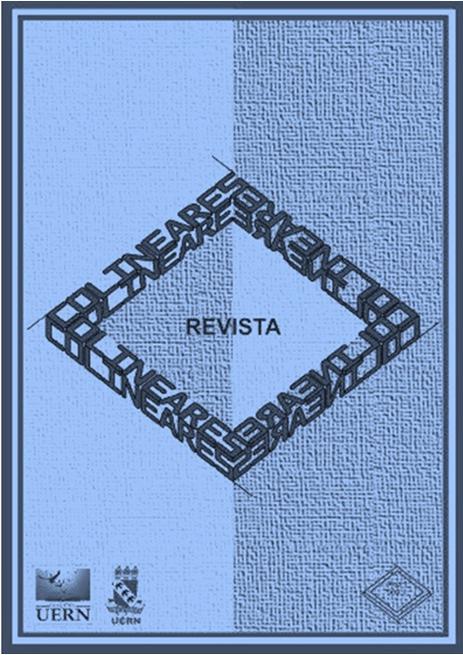THE ELISION IN POPULAR SPEECH OF SALVADOR
Keywords:
Varition, External sandhi, ElisionAbstract
This research intends to understand the favorable contexts to the application of elision, one of the external sandhi phenomena. The elision occurs in word boundaries, context where usually the low vowel /a/ is deleted when followed by a different vowel. The proposal is to contribute to a more detailed description of elision that occurs in Brazilian Portuguese, considering popular speech data of Bahia, taken from PEPP (Studies Program on the Spoken Popular Portuguese of Salvador), coordinated by Professor Norma Lopes (UNEB). We selected eight interviews classified by sex (male and female), education (primary and secondary) and age (25-35 and over 65), totaling 1633 contexts where elision can apply. These contexts passed through statistical analysis of Goldvarb 2001, taking into account some variables already analyzed in other studies, as Bisol (1996, 2002), Tenani (2004), Matthew and D'Andrade (2000), Cabré and Prieto (2005) and Ludwig-Gayer (2008). The Goldvarb program selected the following variables as relevant: category of the second vowel (V2), prosodic domain, stress, vocabulary extension, sex, distance between the stresses, combination of words, informant and syllabic structure of V2, indicating that the factors high vowel, phonological phrase, unstressed environment, among others, would favor the application of process in the studied community.
Downloads
References
BISOL, L. (2002). A degeminação e a elisão no VARSUL. In: BISOL, L.; BRESCANCINI, C. (Orgs.) Fonologia e variação: recortes do português brasileiro. Porto Alegre: EDIPUCRS, p. 231-250.
______. (2005). Os constituintes prosódicos. In: BISOL, L. (Org.) Introdução a estudos de fonologia do português brasileiro. 4ª ed. Porto Alegre: EDIPUCRS, p. 243-255.
______. (1996). Sândi externo: O processo e a variação. In: KATO, M. (Org.) Gramática do português falado. Volume V: convergências. Campinas, SP. Editora da UNICAMP, p. 55-94.
BRESCANCINI, C. (2002). A análise de regra variável e o programa VARBRUL 2S. In: BISOL, L.; BRESCANCINI, C. (Orgs.) Fonologia e variação: recortes do português brasileiro. Porto Alegre: EDIPUCRS, p. 13-75.
CABRÉ, T.; PRIETO, P. (2005). Positional and metrical prominence effects on vowel sandhi in Catalan. In: FROTA, S.; VIGÁRIO, M.; FREITAS, M. J (Eds.) Prosodies – with special reference to Iberian languages. Berlim: Mouton de Gruyter, p. 123-157.
COLLISCHONN, G. (2005). A sílaba em português. In: BISOL, L. (Org). Introdução a estudos de fonologia do português brasileiro. 4ª ed. Porto Alegre: EDIPUCRS, p. 101-133.
______. (2007). Proeminência acentual e estrutura silábica: seus efeitos em fenômenos do português brasileiro. In: ARAÚJO, G. A. de. (Org.) O acento em português: abordagens fonológicas. São Paulo: Parábola Editorial, p. 195-223.
LUDWIG-GAYER, J. (2008). Os processos de sândi externo: análise variacionista da fala de São Borja. Dissertação (Mestrado em Letras), Universidade Federal do Rio Grande do Sul. 194f.
MATEUS, M. H.; D"™ANDRADE, E. (2000). Phonological processes. In: The phonology of portuguese. New York: Oxford, p. 129-148.
NESPOR, M.; VOGEL, I. (1986). Prosodic Phonology. Dordrecht: Foris. TENANI, L. (2004). O bloqueio do sândi vocálico em PB e em PE: evidências da frase fonológica. In: Revista Organon: Estudos de fonologia e morfologia, v. 18, n. 36, Porto Alegre, UFRGS.
VIGÁRIO, M. (1999). On the prosodic status of stressless function words in European Portuguese. In: HALL, T.; KLEINHENZ, U. (Eds.) Studies on the Phonological Word. Amsterdam/Philadelphia, John Benjamins, p. 254-294.
Downloads
Published
How to Cite
Issue
Section
License
Copyright (c) 2016 Eleneide de Oliveira Silva, Juliana Ludwig Gayer

This work is licensed under a Creative Commons Attribution-NonCommercial-ShareAlike 4.0 International License.






